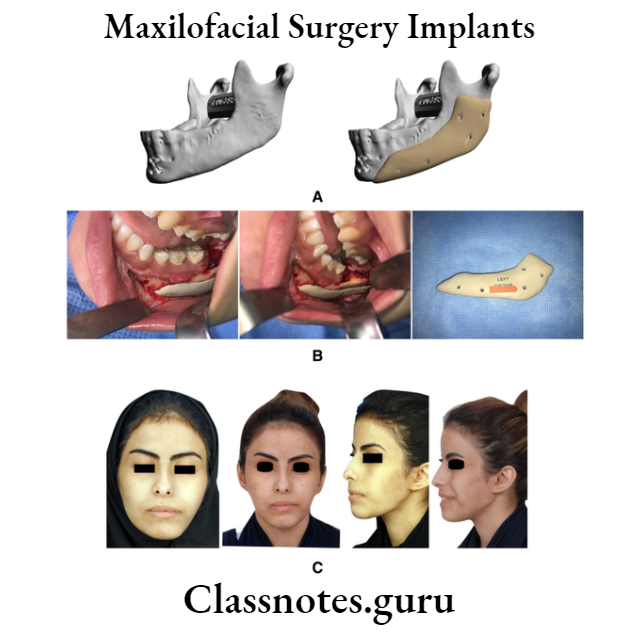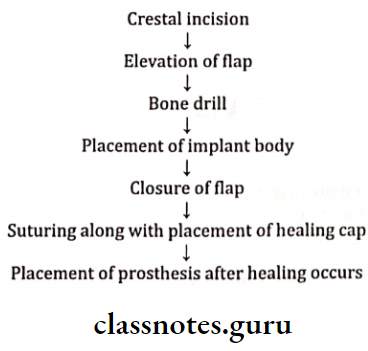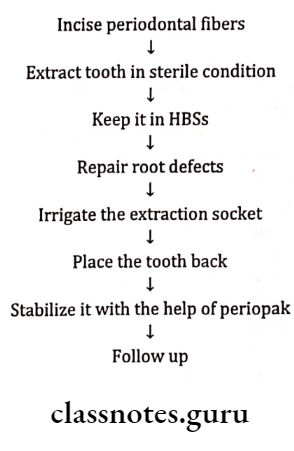Implants Definitions
Dental Implant: Dental Implant is an integral component of the oral implant complex which also consists of supportive bone, interposed keratinized & mucosal oral soft tissues & prosthetic supra structure
Osseointegration: Osseointegration is defined as the direct structural and functional connection between ordered, living bone and the surface of a load-bearing implant without intervening soft tissues.
Read And Learn More: Oral and Maxillofacial Surgery Question and Answers

Implants Important Notes
1. Classification Of Implants:
- Based On Relation To The Bone:
- Endosteal
- Subperiosteal
- Trans steal
- Based On Shape
- Blade type
- Root form
- Based On The Material Used:
- Metallic
- Ceramic
- Based On Surface Characteristics:
- Titanium sprayed coating
- Sandblasting
- Laser-induced surface roughening
- Hydroxyapatite coating
2. Indications Of implants
- Edentulous patients
- Partially venous
- Single tooth loss
3. Contraindications Of Implants
- Diseases:
- Uncontrolled diabetes
- Malignancy
- Diseases of connective tissue
- Blood dyscrasias
- Psychological disorders
- Iatrogenic:
- Immunosuppressant therapy
- Radiation
- Drug addiction
Implants Short Essays
Question 1. Dental implants.
Or
Indications & contraindications of implants.
Answer:
Definition Of Dental Implants:
Dental Implants is an integral component of the oral implant complex which also consists of supportive bone, interposed keratinized & mucosal oral soft tissues & prosthetic supra structure
Classification Of Dental Implants :
- Based On Relation To Bone:
- Endosteal
- Subperiosteal
- Trans osteal
- Based On Shape:
- Blade type
- Root form
- Based On The Material Used:
- Metallic
- Ceramic
- Based On Surface Characteristics:
- Titanium sprayed coating
- Sandblasting
- Laser-induced surface roughening
- Hydroxyapatite coating
Implant Materials:
- Metals:
- Stainless steel
- Gold
- Titanium
- Zirconium
- Ceramics:
- Aluminium oxide
- Titanium oxide
- Calcium phosphate
- Bioactive & biodegradable ceramics
- Polymers
Indications Of Implant :
- Edentulous patients
- Partially edentulous
- Single tooth loss
Contraindications Of Implant:
- Diseases:
- Uncontrolled diabetes
- Malignancy
- Diseases of connective tissue
- Blood dyscrasias
- Psychological disorders
Iatrogenic Of Implant :
- Immunosuppressant therapy
- Radiation
- Drug addiction
The Procedure Of Implant :


Implant Short Question And Answers
Question 1. Complications of implants.
Answer:
Complications Of Implant:
- Bemoriage
- Nerve injury
- Fracture of jew
- Sematome
- Infection
- Mobility of implant
- Periimplantitis
- Edema
- Sinusitis
Question 2. Osseointegration
Answer:
Definition Of Osseointegration:
Osseointegration is defined as the direct structural and functional connection between ordered, living bone and the surface of a load-bearing implant without intervening soft tissues
- Osseointegration is a fundamental requirement and essential component for implant success
Process Of Osseointegration:

Requirements Of Osseointegration:
- Immobility of implant relative to the bone
- Avoid excessive accusal forces
- Proper vascular supply and oxygen tension
- A strict aseptic technique should be maintained
- Profuse irrigation during drilling
Significance Of Osseointegration:
- Once osseointegration is achieved, implants can resist and function under accusal forces for many years
Question 3. Reimplantation.
Answer:
Reimplantation
Reimplantation is the intentional removal of the tooth and its reinsertion into the socket after retrograde obturation and resection of the root tip.
Indications Of Reimplantation:
- Broken instruments in canals
- Calcified canals
- Over filling
- Curved canals
- Presence of foreign body in periapical tissue.
Contraindications Of Reimplantation:
- Medically compromised
- Periodontal involvement
- Missing buccal/lingual plate
- Nonrestorable tooth
Technique Of Reimplantation:

Implants Process Viva Voce
- An endosteal implant is an implant inserted in the bone
- Endosteal implants can be either root form or plate form
- The transfer coping in an implant is used to position an analog in the impression
- In the case of an endosseous implant, a per mucosal seal of the soft tissue at the implant surface is essential
- The most common type of implant in use today is endosteal implants
- The minimum space between implant should be 3 mm
